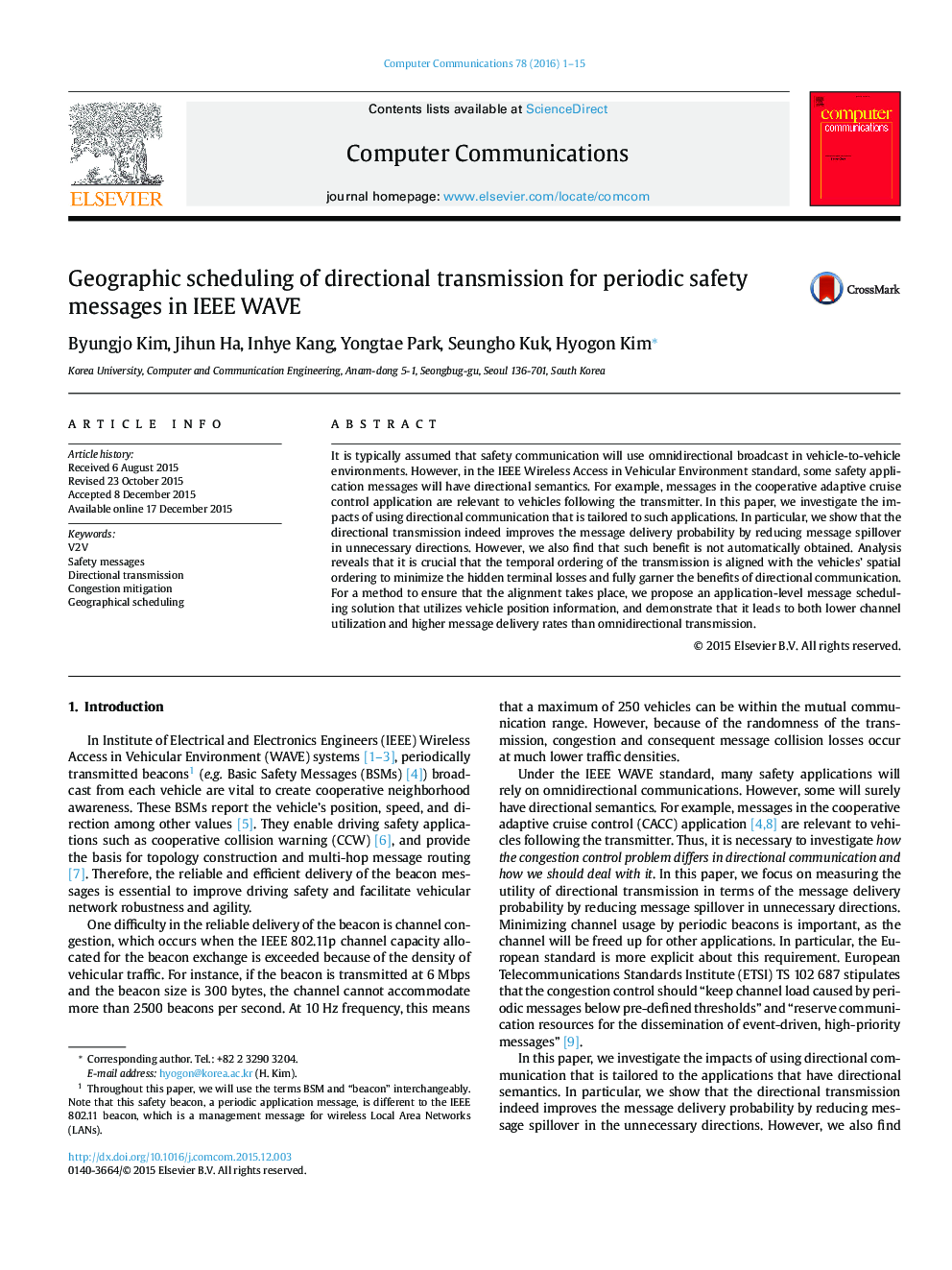| Article ID | Journal | Published Year | Pages | File Type |
|---|---|---|---|---|
| 449931 | Computer Communications | 2016 | 15 Pages |
It is typically assumed that safety communication will use omnidirectional broadcast in vehicle-to-vehicle environments. However, in the IEEE Wireless Access in Vehicular Environment standard, some safety application messages will have directional semantics. For example, messages in the cooperative adaptive cruise control application are relevant to vehicles following the transmitter. In this paper, we investigate the impacts of using directional communication that is tailored to such applications. In particular, we show that the directional transmission indeed improves the message delivery probability by reducing message spillover in unnecessary directions. However, we also find that such benefit is not automatically obtained. Analysis reveals that it is crucial that the temporal ordering of the transmission is aligned with the vehicles’ spatial ordering to minimize the hidden terminal losses and fully garner the benefits of directional communication. For a method to ensure that the alignment takes place, we propose an application-level message scheduling solution that utilizes vehicle position information, and demonstrate that it leads to both lower channel utilization and higher message delivery rates than omnidirectional transmission.
